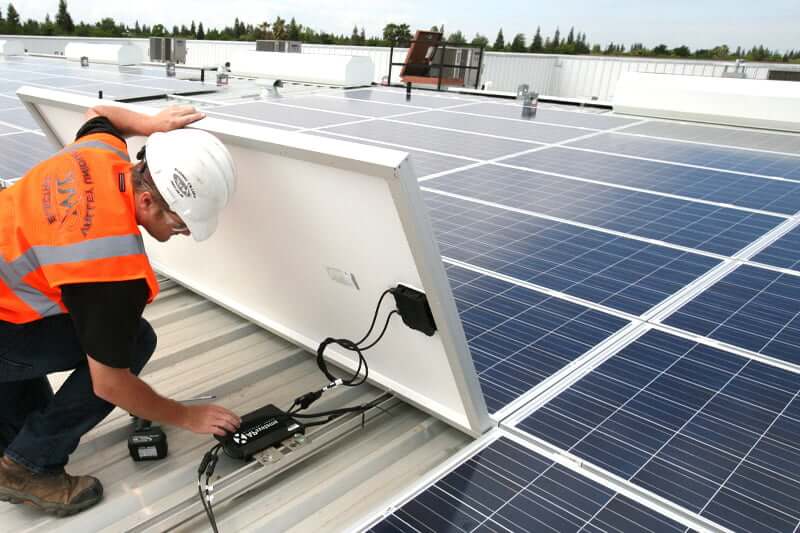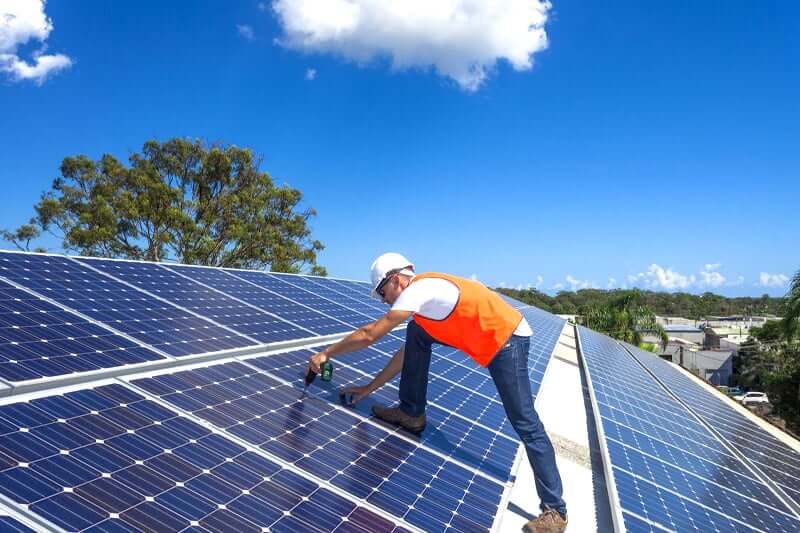Home Solar Inverters Are Microinverters Worth The Extra Money?
Are Microinverters Worth The Extra Money
Microinverters convert the direct current (DC) coming from each individual solar panel into alternating current (AC), making it usable for your household. This ensures that each panel in your solar array is running at optimal efficiency. Consequently, each panel produces the highest amount of electricity it can, which is then supplied to your home’s solar system.
By ensuring that each solar panel in the system is effective, microinverters are worth the extra money invested in them. IF you want to install solar microinverters in your system, you will have to increase your solar system installation budget by 20%.
String inverters are solar system inverters that convert the DC power produced by your whole solar system to AC power for the home. String inverters receive as much power as the lowest producing solar panel in the system. Thus, your solar system doesn’t produce at its optimum level.

Table of Contents
ToggleAdvantages of Solar Microinverters
Maximum Power Point Tracking
Microinverters determine the optimum output of a solar system at any given time while considering the prevailing weather conditions. Thus, installing microinverters in your system ensures that you get the most out of your system for its lifetime.
If one of the solar panels in your system is under a shade at a particular time, output from this panel reduces. Microinverters ensure that the other solar panels that are not shaded produce at their optimum levels.
With a string inverter connection, the solar power that would come into your house would be equivalent to that produced by the shaded solar panel.
Monitoring
Microinverters come with a monitoring system. They ensure that you know the individual panel that is not producing optimum power. With a string microinverter, you would not know when or which solar panels in the system are faulty.
Thus, you can alert your installers and they would find a remedy for the situation fast.
More Electricity From Your System
Using micro-inverters ensures that you receive more electricity from your solar system. String inverters receive the power from the solar system equivalent to the least producing solar panel.
With microinverters, the amount of power produced by each solar panel can be used to power the home.
Suitable For Large Solar Systems
When you install a large solar system in your house, the solar panels may not fit over a single area of the roof. Some solar panels may also face different directions. With such a solar system, it is difficult to determine its productivity. Hence the need for microinverters.
Microinverters ensure that you can get the power you need from every solar panel every day. You can also monitor the performance of the system easily. Allowing you to know which part of the system is working as it should and which is not.
Durability
Microinverters are built to last as long as your solar panels. Once you install your microinverters, they will remain on the solar panels for as long as the solar panels are on your roof. Most solar microinverter manufacturers provide a 20 to 25 years warranty similar to those on solar panels.
Disadvantages of Microinverters
Installation Costs
When you have microinverters in your solar system, you increase the installation costs of your solar system. If you install a 5kW system with 20 panels, you will also need to buy 20 microinverters and hire an installation company with the technical know-how to install the microinverters correctly. Thus, you will end up paying more.
You Might Have To Fix Your Roof
Since a microinverter is installed under each solar panel in the system, you will have a lot of hardware on your roof. If your roof is not strong enough to hold the solar panels and the microinverters, you may have to change the roof to install a stronger roof.
Also, to avoid the risk of your microinverters becoming lightning rods, you may have to add a lightning rod on your roof to keep your home safe.
Are Microinverters Worth The Extra Money
In my opinion, microinverters are worth the extra money it will cost you to install them. They ensure that you have optimum electricity production from your solar system. They also allow you to monitor the performance of your solar panels as opposed to when you use a string inverter.
Microinverters are good to have when you have solar panels facing in different directions or when you have shade issues with your solar panels.
FAQ's
In optimum solar power production conditions, you may not need microinverters. However, if you have shading problems, microinverters will prove their worth.
With regular inverters, if a part of your solar panels is shaded, you will receive as much power as the shaded solar panels produce. If you install microinverters, the shaded solar panels will not affect the production of the other panels.
Microinverters will ensure that your unshaded solar panels continue producing at their optimum and the power they generate is used to power your home. The shaded panels will still generate power at lower efficiency.
When installing a solar system that requires microinverters, the most essential aspect to look for is the quality of the microinverter you want to purchase.
Make sure to buy only high-quality microinverters for your solar system.
There are several brands of microinverters in the market now. Carry out proper research on the best micro inverter in the market.
High-quality microinverters ensure longevity, little to no maintenance costs, and high solar power production.
Poor quality solar microinverters will have high failure rates, which means more costs to replace or repair them.
It is easy and cheaper to increase the size of your solar power system when you use micro-inverters instead of string inverters. All you have to do is contact your installer and they will bring your extra solar panels and inverters and add them to the current system easily.
When using a string inverter, you will have to replace the inverter with a new one that will handle the new system’s production capacity.

Compare Solar Panel Quotes
Table of Contents
Toggle









